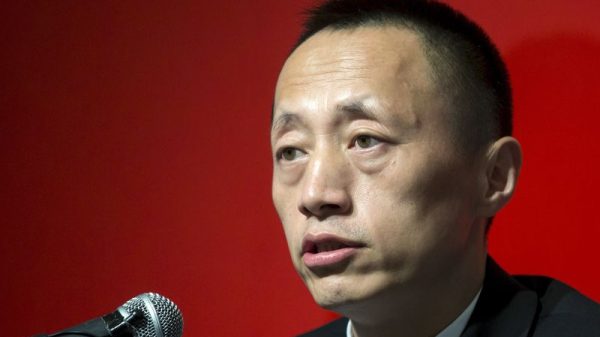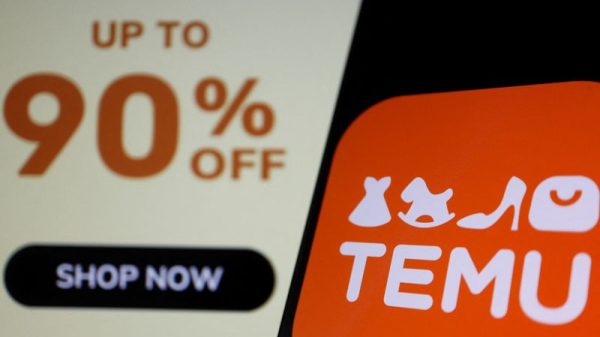Altice USA (NYSE: ATUS) has reported a quarter marked by operational improvements and strategic growth in its fiber customer base during the Q3 2024 Earnings Call.
CEO Dennis Mathew emphasized the company’s commitment to enhancing customer experience and operational stability, which has led to a reduction in operating expenses and an increase in fiber and mobile customers.
Despite a decline in total revenue and residential revenue, the company’s mobile services revenue saw a significant increase, and Altice USA maintains a strong liquidity position with no debt maturities until 2027.
Key Takeaways
Altice USA reported Q3 revenue of $2.2 billion and adjusted EBITDA of $862 million.
The company has reduced operating expenses by $500 million since Mathew’s tenure began.
47,000 new fiber customers were added in Q3, reaching a total of 482,000.
Mobile services grew with 36,000 new lines, totaling 420,000.
Altice aims to grow its fiber customer base to over 1 million by the end of 2026 and increase gross margins to around 70%.
The company anticipates 500,000 fiber customers by year-end 2023, with a long-term goal of over 1 million by 2026.
Residential mobile services revenue surged by 50%, while residential revenue declined due to video subscriber losses.
Altice USA generated $77 million in free cash flow in Q3 and has a strong debt maturity profile with no maturities until 2027.
Company Outlook
Altice USA is focused on growing its fiber and mobile subscriber bases, aiming for over 1 million customers in each segment by the end of 2026 and 2027, respectively.
Operational efficiencies and improved programming agreements are expected to enhance gross margins to around 70% by 2026.
The company is committed to community support and improving its networks, particularly in response to Hurricane Helene in North Carolina.
Bearish Highlights
Q3 total revenue was down 3.9% year-over-year, with residential revenue declining 5.6%.
Net broadband subscriber losses totaled 50,000 for the quarter.
Bullish Highlights
The addition of 47,000 fiber customers and 36,000 mobile lines in Q3 indicates strong growth in these areas.
Residential mobile services revenue increased by 50%, showing potential for further expansion.
Misses
Despite the growth in fiber and mobile customers, the company experienced a decrease in total revenue and residential revenue.
Q&A Highlights
Mathew discussed new product launches, including Total Care and Whole Home Wi-Fi, aimed at improving customer experience and ARPU.
The company is optimistic about its fiber network expansion, with 70% of net additions in the last quarter coming from fiber migrations.
Altice USA is open to value-accretive opportunities for mergers and acquisitions but has no announcements at this time.
Altice USA continues to navigate a competitive landscape with a focus on operational excellence and market strategy evolution.
The company’s efforts in enhancing customer service, launching new product offerings, and expanding its fiber network are central to its long-term growth strategy and shareholder value.
With a strong liquidity position and a commitment to reducing capital expenditures, Altice USA is poised to continue its progress in the dynamic telecommunications market.
InvestingPro Insights
Altice USA’s (NYSE: ATUS) recent earnings call highlighted operational improvements and strategic growth in its fiber customer base, which aligns with several key insights from InvestingPro.
According to InvestingPro data, Altice USA’s market capitalization stands at $1.67 billion, reflecting its position in the competitive telecommunications market. The company’s revenue for the last twelve months as of Q2 2023 was $9.11 billion, with a revenue growth of -2.88% over the same period. This data corroborates the company’s reported decline in total revenue during the Q3 earnings call.
An InvestingPro Tip indicates that Altice USA’s stock price movements are quite volatile, which is evident in the company’s recent performance. The stock has shown a strong return of 50.58% over the last three months, and a 30.81% increase over the last six months. This positive momentum could be attributed to the company’s operational improvements and growth in high-value segments like fiber and mobile services.
Another relevant InvestingPro Tip suggests that analysts predict the company will be profitable this year. This aligns with CEO Dennis Mathew’s focus on enhancing customer experience and operational stability, which has led to reduced operating expenses and increased fiber and mobile customers.
It’s worth noting that InvestingPro offers 8 additional tips for Altice USA, providing investors with a more comprehensive analysis of the company’s financial health and market position. These insights can be particularly valuable given the company’s evolving strategy in the telecommunications sector.
Full transcript – Altice USA Inc (ATUS) Q3 2024:
Operator: Greetings, and welcome to the Altice USA Third Quarter 2024 Results Conference Call. At this time all participants are in a listen-only mode. A question-and-answer session will follow the formal presentation. [Operator Instructions] As a reminder, this conference is being recorded. It is now my pleasure to introduce you to Sarah Freedman with Investor Relations. Thank you, Sarah. You may begin.
Sarah Freedman: Thank you. Welcome to the Altice USA Q3 2024 Earnings Call. We are joined today by Altice USA’s Chairman and CEO, Dennis Mathew; and CFO, Marc Sirota, who together will take you through the presentation and then be available for questions. As today’s presentation may contain forward-looking statements, please carefully review the section titled Forward-Looking Statements on Slide 2. Now turning over to Dennis to begin.
Dennis Mathew: Thank you, Sarah, and thank you to everyone for joining us today. As I reflect on my two years at Optimum, I’m incredibly proud of how far we’ve come in building the foundation we envisioned. Phase 1 of our transformation was to stabilize our operations, create a dynamic and innovative culture and focus on delivering superior products and services over our award-winning networks. We strengthened our leadership bench, broke down organizational silos and began to implement process tools and system improvements based on feedback from customers and employees. So it was a proud moment when we were certified as a great place to work this year because it marked a turning point in our culture, reflecting the revitalization and pride our people now feel to be part of team Optimum. Quality and Value are paramount to the transformation of our customer experience, and so we prioritize both. To drive quality products, quality networks and quality service, we have made fundamental and comprehensive changes to our operations, which have led to a significant reduction in outages, more reliable products, a smoother fiber migration journey and strong cross-functional partnerships across our frontline organizations. This work has resulted in recognition from organizations like Ookla, PC Mag, CNET, ACSI and others acknowledging our progress in customer experience, network excellence and service leadership across our footprint. From a value perspective, we repositioned Optimum Mobile and launched a true mobile strategy. We established simplified and transparent pricing and rightsized speeds for almost 1 million customers. This has allowed us to meaningfully stabilize churn in the face of increasing competition from fixed wireless and overbuilders. Simultaneously, we implemented a new level of financial discipline across every area of the business, which has enabled us to stabilize OpEx, capital intensity and ARPU erosion. Phase 1 included delivering over $500 million of improvements across operating expenses and capital expenditures. When I started, OpEx was run rating over $2.7 billion and was on a trajectory to keep climbing. We are now run rating closer to $2.6 billion with a path to moderate this further over time. Our capital spend was $1.9 billion in full year ’22. This year, we expect $1.5 billion of CapEx, a reduction of approximately $400 million in 2 years. In full year ’22, our residential ARPU declined over 2% year-over-year, more than a $3 decline. Since then, we have sustained residential ARPU above $135 each quarter despite challenges from video declines. We successfully moderated this rate of decline in ’23 and anticipate further improvement this year. We are proud of the progress that we have made, but we know we have much more work to do. We are now progressing to Phase 2 of our journey, which is to accelerate business transformation. This work will position Optimum to succeed competitively, grow new revenue streams, moderate OpEx, deliver more value to our customers and communities and return to sustainable growth. In our conversation today, I look forward to providing you with a view into how we expect this transformation to improve our financial and operational trajectory and generate shareholder value. Before diving into the details, I want to take a moment to acknowledge those affected by the recent hurricanes in the southern states. Our hearts go out to all these communities. Hurricane Helene impacted some of the communities we serve in North Carolina. I’m incredibly proud of our team’s swift and coordinated response, showing how much faster, more organized and effective we have become under our current leadership. Our teams mobilized quickly to deploy WiFi access and charging trailers, provide connectivity for emergency shelters, issue support to our customers and restore service quickly. Our commitment to our communities remain stronger than ever, as we continue to support their rebuilding and recovery efforts. Let’s now turn to Slide 3 to review our business performance. In Q3, we reported revenue of $2.2 billion, adjusted EBITDA of $862 million and cash CapEx of $359 million. As we discussed previously, the macroeconomic environment, video cord cutting and increased level of competition continued to weigh on our Q3 results. However, we remain focused on the elements within our control, driving fiber penetration, accelerating mobile line additions, achieving relatively stable ARPU despite pressure from video losses and maintaining near record low levels of churn. We also improved capital efficiency year-to-date and generated free cash flow, all while continuing to improve quality customer experience and operational metrics. Overall along with other operators within our footprint, we continue to experience low levels of activity this quarter, both lower gross add activity and less disconnect activity. However we made notable progress in direct competition against certain key competitors. And we accelerated positive momentum around our fiber internet and mobile products which remain key growth engines for the company. We added 47,000 fiber net additions, ending the quarter with 482,000 fiber customers. We achieved penetration of approximately 17% across our total fiber footprint with some markets achieving closer to 30%. This was one of our best quarters for fiber migrations, accounting for over 70% of our fiber net adds, underscoring the strong demand among our base. In Q3, we achieved our strongest mobile performance in four years, adding 36,000 new mobile lines, reaching 420,000 lines at the end of the quarter. We anticipate continued acceleration in mobile, as we introduce competitive new offers, expand our product portfolio, maximize the strength of our sales channels and further scale mobile sales into care and retention. As mentioned, continued low-levels of activity, coupled with continued competitive pressure across our footprint contributed to broadband subscriber net losses of 50,000 in the quarter. I would like to provide more insight into the trends we’re observing within our footprint. Most of the year-over-year decline in our gross add performance was seen within our income-constrained customer segment. Contributing to this was the sunset of ACP and fewer additions in our back-to-school university footprint. The roll-off of the ACP program earlier this year had an impact in Q3 on both gross adds and disconnects. We experienced approximately 10,000 ACP-related disconnects in the quarter, primarily driven by non-paid disconnects. Overall, on disconnect trends, we saw a strong performance in the quarter relative to our competition. Disconnect volumes improved year-over-year and outperformed our competitors rate of loss based on third-party open signal data. Excluding the churn impact from ACP, our underlying disconnect trends have improved. This improvement was in part related to less switching activity. However, it also reflects the continued improvement from our network enhancements, focus on first-time right and the introduction of [AVA] (ph), our internal AI virtual assistant, which helps guide our agents to address the specific individual needs of our customers. From a gross adds perspective, we continued to experience lower activity, which was partially offset by win share improvements against fixed wireless, mature fiber operators and steady progress in our new build areas. Last quarter, we noted that July showed stable year-over-year trends. However, as we progressed through the quarter, performance declined due to a slowdown in overall switching volume within our footprint, over builders launching in incremental markets with aggressive acquisition offers and ACP nonpaid churn weighted towards September. Lastly, to note, our Q3 ending subscribers and net additions also included a onetime positive adjustment to align to the company’s bulk residential subscriber account, resulting in an increase of 4,700 residential customer relationships 3,800 broadband customers and 5,200 video customers. Next, I’d like to highlight a few key accomplishments in Q3 related to our financial discipline, go-to-market strategy and critical network and service enhancements. We demonstrated gross margin expansion of 50 basis points year-over-year, and we delivered free cash flow of approximately $100 million year-to-date. We opportunistically use free cash flow for debt repayment, reducing our revolving credit facility by $100 million this quarter. And we now anticipate full year capital expenditures of approximately $1.5 billion, while maintaining high-quality network investments. This is made possible by our new network leadership team’s focus on strategic project prioritization, stabilizing network operations and driving enhanced project efficiency. Thanks to these efforts, we’re re implementing a multiyear network strategy that ensures we can compete most effectively at the town and local-level. On our go-to-market, we continue to evolve our offers, base management strategy and drive convergence to effectively compete in every market we serve. In September, we rolled out our latest offers, which enable customers to mix and match the services they take through Optimum, with broadband as the hero product, Mobile and our new TV packages as add-ons and a three year price lock for taking all three products. We are pleased with the initial results, including an increase in customers taking multiple products. Additionally, as it relates to our new strategic approach to video, I’m pleased to share that this month, we completed the launch of our full suite of exciting new TV packages. Entertainment TV, Expert TV and Everything TV, which deliver content tailored to what customers want at compelling new price points all available over IPTV and alongside a customer’s favorite streaming services. Entertainment TV which features over 80 top-rated entertainment channels, at a $30 price point, has been available since the end of the summer and is already seeing a strong response from customers even before a marketing ramp up. Starting today, we began offering Extra TV, which brings customers over 125 entertainment, live news and national sports channels for $85. And Everything TV, which is all that plus regional sports networks and premium networks for $140. Video remains an important product in our portfolio. And together, these three TV packages bring to life the new vision of Optimum TV, which helps break conventional all or nothing options to better provide content geared towards customers unique and modern viewing preferences. These options are made possible by more flexible programming agreements, which enable an improved margin profile. And last, on our go-to-market strategy. We are taking disciplined steps to improve our share of connects, especially in an environment of overall low growth ad activity. We are actively optimizing our sales channel mix, revitalizing our sales teams and implementing more performance-driven marketing efforts to stay ahead in the evolving marketplace. On our network and service enhancements, we continue to increase fiber passing and will end this year as planned with nearly 3 million passives. As a result of our capital improvements and strengthened operations, we have increased our capacity to handle more fiber migrations and significantly improve the migration process as we continue to ramp up on marketing fiber. And as we’ve discussed over the last several quarters, we have made significant strides in strengthening our networks and operations. This has led to marked improvements in service call and visit trends across our customer base, reflecting our ongoing commitment to enhancing our network and customer experience. Last quarter, we outlined key elements of our long-term road map. Turning to Slide 4. I’d like to dive deeper and size some of the items that we consider potential near-term opportunities. The main drivers of future top-line potential are from improving broadband subscriber trends, as well as better managing our total subscriber base and increasing the number of products each customer takes with a path to grow Mobile to over 1 million lines by ’27. In addition to the revenues generated by our core products, we have an opportunity to drive growth through value-added services. This includes our existing portfolio of value-added services such as the total care support plan, which fully launched in April of this year at a price point of $15 per month. It also includes the introduction of new value-added products. For example, early next year, we’ll begin offering customers whole home WiFi to support their evolving connectivity needs and begin offering them the ability to purchase their favorite streaming services directly through Optimum to support their evolving entertainment needs. Products such as Total Care, Whole Home WiFi and mobile device insurance have ARPUs in the $10 to $20 range. These products have low to no penetration, and as we launch more over the coming quarters, we are benchmarking against industry standards of over 20% customer base penetration. This represents a meaningful opportunity to drive sustained improvement in ARPU trends over time while enhancing the value we provide to our long-tenured customer base. Within B2B, we continue to introduce new products to better serve our small and medium business customers. In Q4, we are excited to launch our new connection backup service, broaden our security offerings and upgrade our Pro WiFi solution. These are products with strong ARPUs, which have been — which we can drive meaningfully into the base and at point of sale. We have much more to come in B2B by expanding managed services, enhancing security features and growing our current product offerings. Next, a moment on fiber. We have a strong portfolio of network assets, including our HFC and fiber networks, both of which continued to deliver exceptional experiences for customers. Fiber is a differentiated and premium network asset that provides unmatched performance, scalability and reliability, and we are still in the early stages of unlocking the full potential of this powerful network. Our objective is to upgrade customers to fiber, which delivers many benefits, including elevating customer lifetime value, lowering churn rates and driving higher ARPUs over time. It also enhances our network efficiency and reduces long-term operational expenses by streamlining infrastructure and support needs. We expect to reach the milestone of 500,000 fiber customers before the end of this year. And through more targeted acquisition and migration strategies, we believe we have a path to grow our fiber base to more than 1 million customers or 30% penetration by year end ’26. Moving to the next section. We continue to find meaningful ways to drive operational efficiencies. As we continue to improve our gross margin profile, we are looking to achieve around 70% gross margin by 2026. By optimizing our programming agreements, scaling up our Mobile base and growing our Mobile insurance products and accessories. As we are sharpening our focus on business transformation, we are evolving our operational models to fuel growth, simplifying our processes and leveraging and embracing technology solutions. This includes AI, machine-learning, digitization and automation and institutionalizing experimentation, as a core mindset for our people. This work will position us as a digital native company, streamline costs and deliver measurable progress by 2025, including a reduction in our operating expenses over time. We’ve identified meaningful opportunities to drive efficiencies, while simultaneously growing the business and enhancing the customer experience. Over time, these efforts support a return to normalized adjusted EBITDA margins near 40%. Finally, our goal is to sustain a capital structure that supports our long-term operational road map. As it relates to capital expenditure efficiency, we will be working towards the path to annual capital spend of under $1.3 billion in ’25, while continuing to invest and upgrade our fiber and HFC networks. Through improved operations including proactive maintenance efforts and better field productivity, we are maximizing the impact of each dollar invested. In summary, successfully implementing these opportunities could improve our free cash flow by up to $400 million over time. We remain steadfast on our journey to reshape the business, and I’m confident that we are on a path to return to sustainable long-term growth, to deliver value to our shareholders. With that, I will now turn it over to Marc to review our quarterly performance in more detail.
Marc Sirota: Thank you, Dennis. Turning to Slide 6. First, I’d like to spend a moment highlighting the value proposition of our fiber and mobile strategies and the benefits these services are delivering for our business. We have 9.8 million total passings in our footprint, including 2.9 million fiber passings primarily concentrated in the Northeast. Both our HFC and fiber networks are high-quality networks delivering 1 gig or higher speeds over 95% of our footprint. And when pairing Optimum Internet with Optimal Mobile, we’re seeing improved trends across the board. Customers on fiber have higher satisfaction scores, driven by improved network reliability, higher symmetrical speeds of up to 8 gigabits per second and lower latency. Fiber customers generate 10% higher gross add ARPU compared to HFC customers as they subscribe to faster speeds. Our fiber network is designed with robust capacity easily supporting these faster speeds and increased data usage. 45% of our new fiber customers take 1 gig or faster speeds, and 28% of our broadband-only fiber customers use over 1 terabyte of data per month. Our fiber network is even more powerful when bundled with Mobile, driving deeper customer engagement and retention. Over the past year, we’ve increased the percentage of our base that takes a converged product of broadband plus Mobile from approximately 3% to 5%, with more runway to grow. Converged customers also churn less. Notably in Q3, our converge HFC broadband plus mobile bundle had lower annualized churn compared to HFC customers without Mobile service. And this story is even stronger with fiber. Our fiber base already has — experiences 14% lower annualized churn than HFC. But when customers on fiber also adopt Mobile, annualized churn improved by 32% compared to our HFC cohort that does not yet take mobile. In summary, whether on HFC or fiber, convergence with Mobile deepens customer relationships, increases loyalty and reinforces the value of our network investments. With this strong foundation, we are well positioned to build on our converged momentum. Turning to Slide 7, I’ll review our financial trends. In Q3, total revenue of $2.2 billion declined 3.9% year-over-year. This was driven by residential revenue decline of 5.6%, primarily due to a smaller customer base with most of the decline attributed to video subscriber losses. Residential ARPU of $135.77 declined 1.9% year-over-year and was down just 0.1% sequentially from Q2. The year-over-year decline is predominantly driven by video cord cutting and timing of rate actions, which benefited Q3 of the prior year. Pro forma residential ARPU, excluding the impact of video, is approximately $83, which is flat year-over-year and grew 1% sequentially for the past two quarters. Despite the overall pressure on our residential business, residential mobile services revenue grew 50% year-over-year, which is the fourth consecutive quarter of 50% or higher year-over-year growth. Business Services revenue was relatively flat year-over-year in Q3, driven by growth in our Lightpath Enterprise business and offset by declines in SMB and other, which was primarily affected by rate compression in our carrier business in the West footprint. News and Advertising grew 9.5% year-over-year in Q3, driven by strong political advertising revenue in the quarter. Despite top-line pressures, we are improving efficiency and managing direct costs, with gross margins increasing by 50 basis points year-over-year to over 68%. This is mainly driven by improved video pricing, optimize programming costs and improvements in mobile direct profitability. Total adjusted EBITDA declined 5.8% year-over-year in Q3, tied to pressure from top-line growth. Adjusted EBITDA was relatively stable sequentially and drove adjusted EBITDA margin of 38.7%. Total expenses, excluding share-based compensation, improved by 2.6% year-over-year, driven by lower direct costs, including programming and a slight increase in other operating expenses. Turning to Slide 8, I’ll review cash capital expenditures and our progress on enhancing and investing in our networks. Cash capital expenditures in Q3 were $359 million and approximately $1 billion year-to-date, representing capital intensity of 15.5%. We anticipate full year capital spend of $1.5 billion, coming in below our initial guidance of $1.6 billion to $1.7 billion provided earlier this year. This represented a $200 million reduction compared to full year 2023 capital spend and a $400 million reduction compared to 2022. As Dennis mentioned, as we transition from operational stabilization to meaningful business transformation, we are challenging our business models and accelerating digitalization and automation. We believe by equipping our teams with advanced tools and streamlined workflows, we can effectively manage capital expenditures by prioritizing our highest return capital projects, coupled with enhanced efficiencies. Additionally, over the past year, we have refined our procurement operations, including an improved RFP process. We are reengaging with our technology vendors to strengthen partnerships and encourage healthy competition, which is helping to improve our cost profile. We ended Q3 with 2.9 million fiber passes and year-to-date we have expanded our total footprint by 156,000 passings across HFC and fiber newbuilds and edge-outs. We expect to add more than 175,000 new passings to our total footprint in the full year. In addition to footprint expansion and fiber upgrades, our capital envelope supports improving and enhancing our existing networks. We have achieved approximately 99% node health across our entire footprint in Q3, through enhanced monitoring and proactive maintenance. This program ensures consistent, reliable service by proactively identifying and addressing potential issues before they affect customers. As of Q3, we’ve upgraded approximately all of the West footprint to DOCSIS 3.1, and we continue to deploy new digital modulation technologies on our DOCSIS 3.1 network to improve broadband performance. Over 3 million customers will experience better speed attainability and reliability this year, and these upgrade costs less than $350 per node. This allows us to reduce the number of capital-intensive node splits required, and we are performing node splits in a more cost efficient manner. Our targeted approach to capital spending focus is a high impact. Cost effective network upgrades and allows us to expand capacity, enhance service quality and manage future growth within our capital resources. Next, on Slide 9, I will review free cash flow trends. In Q3, we generated $77 million of free cash flow and approximately $100 million year-to-date. Our free cash flow trends reflect higher cash interest expense which stepped up by $115 million in Q3 year-over-year. This is primarily driven by the first annual – semi-annual cash interest payment on the $2 billion new issue in January of this year to refinance prior existing term loans. At the end of September, we terminated all of our CSC Holdings interest rate swap agreements with an aggregate notional value of $3 billion. These contracts were due to ensure in January of 2025 and December of 2026. In connection with these early terminations, we received cash of approximately $43 million. While this provided a positive impact on our working capital for the quarter, it was largely offset by cash outflows from higher cash restructuring, settlements and transaction costs of $41 million. The majority of these costs stem from net cash settlement payment that was accrued in the prior quarter. And finally, on Slide 10, I would like to review our debt maturity profile. We remain well positioned with a clear runway of no maturities until 2027. At the end of Q3, our weighted average cost of debt is 6.8%. Our weighted average life of debt is 4.3 years, and 71% of our debt-stack is fixed. At the end of Q3, we remain in a strong liquidity position of approximately $1 billion through undrawn revolver capacity and ending cash balances, and our leverage ratio is 7.1 times, the last two quarters annualized adjusted EBITDA. As Dennis mentioned earlier, we remain focused on exploring opportunities that ensure our capital structure supports our long-term operating goals. While we are well positioned in the near-term, we continue to actively assess all options to maintain a capital structure that supports our long-term strategic objectives. In conclusion, we have the right strategy in place with a focus on operational excellence, elevating the customer experience and continuing to evolve our go-to-market strategy to meet our customers’ expectations. We are confident this strategy will guide us towards sustainable long-term growth, creating value for our customers, employees and shareholders. With that, we will now take any questions.
Operator: Thank you. At this time we will be conducting a question-and-answer session. [Operator Instructions] And the first question comes from the line of Craig Moffett with MoffettNathanson. Please proceed with your questions.
Craig Moffett: Hi, thank you. So your larger peers saw some improvement in broadband and it seemed as though that maybe was driven by at least under — if you set aside ACP. And it seemed like that was driven to some extent by a softening of the pressure from FWA. I’m wondering if you saw the same thing? And with your broadband ARPU growing sequentially, is that a sign that you think you’ve sort of repriced your broadband base to the point where it is now sort of competitively priced and you think you can sustainably grow broadband ARPU with sort of industry broadband growth rates?
Dennis Mathew: Hi, Craig. On the gross add activity and net add and just competitive environment, across our footprint, we did see a decline in just gross add activity of about 11% across the industry. At the same time, we saw a little bit of a decline in disconnect activity as well. And as we look at the competitive landscape, we did see expansion of fixed wireless in the East, particularly as you think about Verizon (NYSE:VZ), fixed wireless and T-Mo. And then in the West, we did see some expansion with AT&T and T-Mo. And we continue to see fiber overbuilder activity every month. That being said, we are happy with our win-loss percentage continuing to improve as we are starting to compete a bit better with our hyper local go-to-market strategies, both in terms of fixed wireless and in terms of fiber overbuilders, as they launch in our footprints. We are competing more effectively as we start to compete much earlier prior to these announcements and ensure that we can deliver a great portfolio of products. And so we are starting to stabilize across those markets that have already seen overbuilder launches. And so I would say, we are continuing to see fixed wireless expand. We’re continuing to see fiber overbuilders expand. That being said, I do believe we have the right portfolio of products and we’re evolving our go-to-market strategies to compete more and more effectively. There’s less [jump falls] (ph). So I am very pleased with the team being able to keep churn stable even with these headwinds of increased competition. And I think that’s really a testament to the improved quality that we are delivering quality products, quality service and quality network. From an ARPU perspective, this has been a journey for us. As you know, Craig, ARPU we began this journey when I started, and we saw a pretty significant decline, 2%, a $3 step down. We’ve been able to stabilize that across the last seven quarters that has included putting in place the right price value equation that has helped us tremendously by speed rightsizing customers and giving them the right value, as well as launching products like Mobile and Optimum Complete. But then also putting more science behind how we are managing promo roles and rate increases. Unfortunately, we didn’t have that infrastructure in place, and now we’re able to do that in a way that optimizes monetization and mitigates churn. And so we are confident that we are going to be able to continue to stabilize and ultimately grow broadband ARPUs and customer ARPUs, as we further stabilize our promo roll rate event process and as we launch new products and new value-added services like Total Care, like Whole Home WiFi and others. And Phase 1 has been all about stabilization, and now we are going on the offensive to drive growth.
Craig Moffett: Thank you.
Operator: And the next question comes from the line of Jonathan Chaplin with New Street Research. Please proceed with your questions.
Jonathan Chaplin: Thanks guys. Two related questions on margins. First, on Mobile can you give us a sense of how much of a drag this is creating for EBITDA at the moment? And then what Mobile EBITDA would be by the time you get to 1 million customers at the end of 2026? And then relatedly on margins for 2026, the 40% target is obviously great. I guess my concern is that we saw the prior management team get quite aggressive on costs. And ultimately, that — it looks like that cost the business in the medium-term and costs had to increase to kind of repair some of that damage. And I’d love you to sort of just conceptualize the costs that will come out between now and 2026 in the context of the bigger reinvestments you’ve made in the business and like why we shouldn’t be concerned that those cost-outs ultimately have a negative impact on revenue trends? Thank you.
Dennis Mathew: Hi, Jonathan, I’ll start and then, of course, Marc can chime in. No, we feel really bullish on this opportunity to continue to optimize efficiency and our operating model and ultimately drive down operating expense. As I’ve mentioned in previous calls, we’ve been on a journey to really ensure that we have the right level of quality across this organization in terms of products, network and service. And that’s really allowed us to drive down contact rate, drive down service visit rates, as I’ve mentioned in the past, and we continue to see a marked improvement, 11% call-in rate decline year-over-year — 300,000 fewer service visits, a 28% decline year-over-year. And this is just the beginning. This is really just rolling up our sleeves, working hard, working smart, but a lot of hard work. And now as we move forward, we have an opportunity to drive digital, drive automation, drive true transformation into the organization. When we showed up there was the level of brokenness in terms of processes and capabilities was vest. And we began working hard on things that quite frankly, Marc and I were working on in other organizations probably 10 years, 15 years ago. And we’ve implemented those changes over the last two years and have put a foundation in place to allow us now to drive accelerated growth. And this growth will come on the back of improved customer experience, which will ultimately drive efficiency and allow us to grow revenue. And so we’re going to further drive down noise in the system. We’re going to further drive down calls. We’re going to further drive down truck rolls. We’re going to become a digital-first company, so that you can buy products from us digitally. So that you can service your products digitally through our apps and online, so that you can pay your bills, so that you can resolve any issues that you have. And this will allow us to drive down noise in the system and ultimately lay the foundation for an optimized operating expense model that will fuel growth as we move forward. Marc, if you want to chime in on the Mobile piece?
Marc Sirota: Yes. Just again on operating efficiency, I’m really pleased with the power of AI and how we deployed that across the footprint and our sales channels upwards of 6,000 agents are now leveraging AI to guide every single conversation we have with our customers. We are about to launch new AI platforms on why did my build change. And so simple things like that, we’re going to be able to answer in seconds versus minutes today. So excited about where we’re heading with AI. We’re going to be able to deflect noise out of our network operations using AI technology. From a Mobile perspective, again very optimistic about what convergence does for our company. We’ve seen expansion in direct Mobile margins over the year. Very pleased with that, and we think it will continue to serve as a linchpin as far as driving down broadband churn and accelerating lifetime value for our customers. So we are just getting started. When you couple Mobile with the fiber, as you heard, 32% reduction in churn. And we are really just starting to get going on these platforms and excited for where it’s going to go.
Jonathan Chaplin: Thanks guys, really appreciate it. Thank you.
Operator: And the next question comes from the line of Kutgun Maral with Evercore ISI. Please proceed with your question.
Kutgun Maral: Yeah, good evening, thank you for taking my questions. Two, if I could. First, you highlighted a fairly attractive set of opportunities across revenue, fiber margins and CapEx. Historically meeting multiyear targets for, not all to specifically, but for the industry overall has been difficult for various companies in large part because of the volatility in broadband unit growth. I know you’re not providing explicit multiyear broadband subscriber guidance today. But as we think about some of these margin targets and the free cash flow improvement opportunities you laid out, can you share perhaps what’s embedded from a subscriber perspective? And second, on Mobile you outlined, again, a compelling case for the benefits of scaling the mobile subscriber base. You talked about a path to growing Mobile to over 1 million lines by the end of 2027. Not to get too in the [weeds] (ph) here, but this would imply about an average 45,000 net adds a quarter. You just achieved a high watermark for the last four years at 36,000. So Dennis, I know you hit on a few initiatives, but can you expand a bit more about how you expect to accelerate that pace and what that cadence looks like over the coming years? Thank you.
Dennis Mathew: Thank you, Kutgun. I’ll start with Mobile because we’re really starting to see an acceleration here. This has been a journey for us as we relaunched Mobile about 18 months ago. New pricing, new packaging. We launched in our sales channels, of course. We were able to build out retail and transformed them into mobile sales centers. We were also able to pull together acquisition offers like Optimum Complete that are now gaining really nice traction in inbound sales and door-to-door and across the board. We’re really on the — in the early innings in terms of the balance of our channels. And when you think of our peers, they do an incredible job. Selling in retention, selling in care, selling across every touch point, and we are just getting started. We’ve just started to sell in care and retention. We are a little less than 30% participation. And so we have a really meaningful opportunity now to really start to scale across the balance of our internal channels and really start to accelerate into that type of pacing. I ultimately believe that we can get to the pacing of our peers. If you look at what our peers are doing and you normalize for size, I think we should be right in line with them closer to 60,000 a quarter. But we’re going to take it one step at a time and really start to scale out the balance of our channels and roll out some new advanced base management strategies that will help us drive our customers into retail and ultimately do a better job of raising awareness and consideration amongst our base. Similarly, if you look at the broader set of opportunities, we have exactly the same opportunity. We are launching new products that are very much industry-standard products that Marc and I know very well. When you look at opportunities on the consumer side, like Total Care, like Whole Home Wi-Fi, we just launched some new video tiers. These are all tiers that we feel very confident that we can drive in terms of gross add attach, but more importantly drive attach into the base. And then when we look at B2B, we’ve spent some time this year really investing in that organization and building up that leadership team. And we’re going to be launching some new products to help us expand beyond just being a pipe. We are going to launch products like connection backup and advanced security, we have an opportunity to move — expand beyond just SMB into mid-market and enterprise in more meaningful fashion. And so these are all opportunities that we’re confident. Just like we’ve been able to relaunch Mobile and drive Mobile, just like we’ve been able to really start to accelerate fiber, fixed-fiber in terms of the migration process. We have a whole set of new top-line opportunities that we’re confident we can drive. And in addition to all the transformation I discussed earlier, as we leverage digital and AI to transform our operating structure. Marc, anything you’d like to add?
Marc Sirota: Yes. Just from a broadband perspective, as Dennis mentioned very pleased with our churn profile. We’re hitting all-time lows around churn. And so continuing to drive the right products. We talked about Mobile and Fiber and how that impacts churn will continue to drive that. So that gives us optimism around where we had from a broadband perspective. We feel like there is still an opportunity on the gross add side, especially on the low income side where we see most pressure. We’re going to work to solve that, and we will in the upcoming quarters. And then just back on Mobile. We feel strong about how our new offers are taking shape over a 60% increase in line penetration from our old offers. So we’re feeling optimistic around our trajectory around unit growth.
Dennis Mathew: Yes. On unit growth, in particular, we’ve seen improvements in our sales channels in terms of productivity and yield. We are seeing strong improvement in our field organization as we talk about completion rate. And now we’re laser-focused on continuing to drive top-of-the-funnel activity. And we are controlling everything that we can control. And we’re confident that as the macro environment continues to evolve, we will be in a good position to take advantage of it as we build the operational execution muscles that we need to — to be able to drive activity and performance.
Kutgun Maral: That’s very helpful. Thank you both.
Dennis Mathew: Yeah, thank you.
Operator: And the next question comes from the line of Jim Schneider with Goldman Sachs. Please proceed with your question.
Jim Schneider: Good afternoon. Thank you for taking my questions. I was wondering if you could maybe address the CapEx reduction for this year and also the out years? Is that entirely due to efficiencies and the existing footprint of spend? Or are you seeing the opportunity for reduction or maybe just less strong returns than you did before? Does this in any way sort of — how are you thinking about the relative prioritization of your free cash flow goals versus your subscriber growth goals? Thank you.
Dennis Mathew: Jim, I’m really proud of the team and the work they’ve done in terms of driving CapEx efficiency. The team has developed a multiyear network strategy to really ensure that we’re making the right investments across the network in the most effective way. Just simple examples. Historically, coming into 2024, the only solution for congestion was doing very costly node splits that costs tens of thousands of dollars. The team is now — the network team and the CTIO organization have identified ways using OFDM and OFDMA to be able to address these congestion issues for a fraction of the cost. And so when you start to look at those types of efficiencies, it really allows us to deploy capital in a way that is much more efficient, much more effective. We’re able to continue to drive our new build activities and ensure that we can achieve our new build goals in this coming year, and we’re continuing to drive our fiber strategy. We have an incredible fiber network and our priority is now to drive migrations and penetration of that fiber network. And so we’re prioritizing CapEx to help us drive maximum return. And the team is doing this in a much more efficient fashion than we’ve been able to do in the past. Marc, if you’d like to add?
Marc Sirota: Just, Jim, on free cash flow. So again, we’re trying to take a balanced approach to maximize free cash flow growth. And Phase 1, as we’ve talked about, and back in 2022 before Dennis joined and I joined, free cash flow declined $1.2 billion year-over-year with revenues declining expenses, accelerating and capital accelerating. In 2023, we slowed that rate of decline to about $300 million. And now we’re in a position in 2024 to actually grow free cash flow for the first time. So all of these things ladder up to generating free cash flow. We are really pleased on the capital efficiency. I think we have a laser focus around return on investment. And we see a lot of opportunities to still drive strong return on investments, and we’ll continue to do so. But we can do this in a more efficient manner. We talked about our procurement team and our partnership with our network services team and our CTIO team, or just finding opportunities to work with our vendors to accelerate every dollar, we have to spend. So really pleased on the trajectory.
Jim Schneider: Great. Thank you.
Operator: And the next question comes from the line of Frank Louthan with Raymond James. Please proceed with your question.
Frank Louthan: Great. Thank you. So in getting to your target of 1 million mobility subs by 2027, it’s a pretty steep ramp from the current run rate. Walk us through kind of what you expect to change there in your approach or to reach that level? And then secondly, do you expect any uptick in Q4 from the political spend as that’s wound up or is most of that just incremental spending going to digital? Thanks.
Dennis Mathew: Thanks, Frank. On Mobile, again I’m really bullish on our trajectory. We had to relaunch Mobile 18 months ago. We’ve really started to find a nice pacing in our sales channels like retail, inbound sales, door-to-door. And that’s been supported by launching new packages like Optimum Complete and really just ensuring that we have a full portfolio, a strong portfolio of Mobile products. Now that we have that, we’re continuing to expand our sales channel activities across channels like Care, retention and really ensuring that we are driving Mobile across every touch point that we have with our customers. And so this is where I know some of our peers excel, and we’re still in the early innings of that. And I’m confident that we’re going to be able to get to the pacing of our peers in short order. So we’re going to have our best Mobile quarter. We just had our best Mobile quarter. We’re going to continue to build on that and have another great quarter in Q4. We’re on track for that. And as we expand into these new channels like Care and retention, as I mentioned earlier, we are only at about one-third of the launch so far, and that happened late in Q3. And so we’re going to continue to expand that across these channels in the next couple of quarters, and that will support our growth quarterly. And on the political spend, Marc, do you want to — political, do you want to chime in on that?
Marc Sirota: Yes, we are seeing robust political advertising coming out of the presidential campaign. So we’re still feeling optimistic. It drove the strong quarterly results. I feel optimistic for full year where we’ll have a near double-digit growth rate on our news and advertising business. So we feel positive about that.
Frank Louthan: All right. Thank you very much.
Dennis Mathew: Thanks Frank.
Operator: The next question comes from the line of Jessica Reif Ehrlich with Bank of America. Please proceed with your question.
Jessica Reif Ehrlich: Thank you. I guess one on the video, the new video packages. It seems like streaming is in a separate package. I’m just wondering, have you — was there any consideration of including it within one of your video packages similar to Charter, which seems like really a true value for subscribers? And on the separate streaming package, do you participate in any of the advertising revenue streamers? And then just a follow-up as there’s been such a big focus for regarding fiber. It seems like, obviously, you focus on the efficiencies and customer lifetime value. Are there any revenue differences you see from a fiber sub and traditional HFC sub?
Dennis Mathew: Hi Jessica, I’ll start with fiber, and Marc, you’ll keep you honest on hitting all these points here. But we have an incredible asset in fiber. We see that every day in the market that fiber is an incredibly valuable asset. We have 2.9 million growing to 3 million homes. The capacity and performance of the fiber network is really something we’re incredibly excited about. We are seeing the benefits of fiber as we look at our customer base, those that are migrating, we are finding better churn, better customer satisfaction, and we are able to drive ARPU growth as we move customers over to fiber. These customers are taking 40% plus in terms of gig and multi-gig services. And so we’re excited about fiber and continuing to drive fiber and accelerate fiber. We’ve had one of our strongest fiber quarters, and we’re going to continue to accelerate as we go into Q4 and into 2025. When you talk about streaming and our new video packages, we are excited about our new video packages. Entertainment TV has 80 great channels, Extra has 125, Everything has all of that and regional sports. And this is all about providing customers the right content, curating the content and getting them the right content at the right price. And in early next year, we are also going to be launching our billing on behalf of capabilities where we’ll be able to more seamlessly bundle in streaming services. This is why we’re so bullish on launching and driving our stream set-top box. It’s an Android-based set-top box that we launched across the East. We’re going to be launching that across the West. We’re at 30% today. We’re going to complete that launch in next year. And so we are going to drive the launch of that box so that we can launch these packages and bundle in have the options to bundle in streaming as we move forward. Marc anything you’d add?
Marc Sirota: I think it does — it provides an opportunity for future advertising upside. We currently don’t have that now. And so that’s an opportunity for us.
Jessica Reif Ehrlich: Thank you.
Operator: And our final question comes from the line of Sebastiano Petti with JPMorgan. Please proceed with your question.
Sebastiano Petti: Hi, thanks for taking the question. Just wanted to see if perhaps you can update us on what your future plans are for the fiber passings from the 3.0 million that you’re at today? Just any color on there and how you’re thinking about that relative to HSC, particularly against the backdrop of the updated CapEx envelope that you outlined today? And then particularly within that, how should we think about migrations and what that might mean from a margin perspective as you ramp the level of fiber migrations within the base here?
Dennis Mathew: Hi, Sebastiano. Yes, we’re very bullish on our fiber network, and we’ve built out 2.9 million growing to 3 million and our major focus now is driving penetration. We’ve solved a number of the operational and technical issues. And so we’re ramping this past quarter. About 70% of our net adds were driven by fiber migrations. And so as we embed the process into all of our channels like Care, like Retention, like Retail, we’re confident that we’re going to be able to continue to drive the growth of fiber. We’re looking at our CapEx spend and our multiyear strategy. We want to have the right balance in terms of growing new passings, building fiber and then driving fiber migration. And so that’s — there will be a balance there. As we think about the near term, we do think that we want to focus on driving fiber penetration and continuing to drive new build. Four of the fastest-growing cities in the country out of the top 16 are in our footprint. And so we want to be able to invest there, and we’re doing that in a fiber-rich fashion. And so that’s our near-term focus, and we’ll continue to build out fiber opportunistically where we think we need it to be able to compete effectively.
Sebastiano Petti: And if I could ask one follow-up question. Just as the backdrop of what we’re seeing across the ecosystem, particularly on — on your competitor side, the M&A angle — how is Altice perhaps thinking about that as either a buyer or a seller or particularly depending upon the outcome of maybe the election and maybe a pro-business climate? Is that anything to update or how you see the landscape unfolding over the next several years as perhaps convergence and consolidation becomes more pronounced? Thank you.
Dennis Mathew: Sure. We’re always open to value accretive transactions, but there’s nothing to announce today. Our focus is to continue to drive our go-to-market strategy and drive growth of our broadband business, both on HFC and fiber, and that’s what we’re living and breathing every day. So nothing to announce today.
Marc Sirota: I would just add, it just further supports the value of our fiber assets and shows how powerful that is. So pleased to be able to continue to drive more and more customers on to this incredible network. Thank you.
Sebastiano Petti: Thank you.
Operator: At this time, we have reached the end of the question-and-answer session. And I would now like to turn the call back over to management for any closing comments.
Sarah Freedman: Thank you all for joining. Please reach out to Investor Relations with any additional questions.
Operator: And ladies and gentlemen, that does conclude today’s teleconference. You may disconnect your lines at this time. Have a great rest of the day.
This article was generated with the support of AI and reviewed by an editor. For more information see our T&C.





























